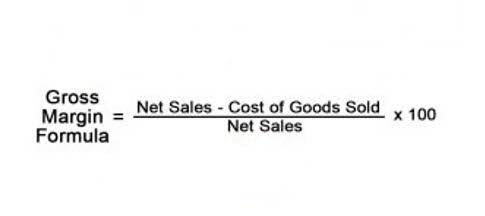
The state’s income tax rates are determined based on taxable income, which is calculated after accounting for various deductions and exemptions. California has the highest top marginal income tax rate in the country. It’s a high-tax state in general, which affects the paychecks Californians earn. The Golden State’s income tax system is progressive, which means wealthy filers pay a higher marginal tax rate on their income. Cities in California levy their own sales taxes, but do not charge their own local income taxes.
Gross Income Deductions
However, it's important to keep detailed records and guarantee that your deductions meet the IRS requirements. Consulting a tax professional can help you maximize your tax savings and avoid any potential issues. The payroll tax expansion increases the state's top income tax bracket from 13.3% to 14.4%. The California Young Child Tax Credit provides up to $1,083 per qualifying child under 6 years old. The credit amount phases out for higher-income taxpayers and is designed to help families with young children.
California Tax Brackets for 2023 Tax Year
Unlike most states that offer deductions, California converts personal exemptions into credits, providing dollar-for-dollar tax reduction. This approach benefits all taxpayers regardless of income level, though california state income tax high earners see proportionally less benefit compared to lower-income taxpayers. California has nine income tax rates, ranging from 1% to 12.3%. Learn more about how to calculate your bill, plus important deadlines. Each bracket corresponds to a range of income, which varies depending on your filing status.
CA tax brackets for married filing separately
California’s income tax rates range from 1% to 12.3%, making it one of the highest state income tax retained earnings rates in the nation. The tax brackets are structured to levy higher rates on individuals with higher incomes, while lower-income earners are subject to lower tax rates. California has one of the highest marginal tax rates in the country. However, how much Californians end up paying in state income taxes depends largely on their income, filing status and which tax rates and brackets apply to them.
- Poor documentation often results in lost deductions, credit disallowances, and audit complications.
- California's tax structure significantly influences optimal entity selection and compensation strategies for professional service businesses.
- With the sixth-highest tax burden in the United States, California residents are no stranger to paying high taxes.
- To keep up with changes in tax law, visit the FTB website.
- If you have filed your California state income tax return and expect a refund, you can check the status of your refund in a few ways.
How do California tax brackets work?
- Understanding your rights can aid in resolving these disputes.
- If your taxable income exceeds $1 million, you’ll pay an additional 1% under the Mental Health Services Act, bringing the top marginal rate to 13.3%.
- California has $13,845 in state and local debt per capita and has a 79 percent funded ratio of public pension plans.
- The calculation starts with the distribution of taxable income as per defined slabs and calculates the corresponding rates.
- In the following tables, we have compiled the most up-to-date data available on state individual income tax rates, brackets, standard deductions, and personal exemptions for both single and joint filers.
- Additionally, optimizing your investment portfolio can yield significant tax savings.
For example, if your income falls into the highest bracket, only the part of your earnings above that threshold is taxed at the top rate. The tax rates and brackets below apply to income earned in 2024, reported on taxes filed in 2025. The rates remain the same as last year, but the brackets shifted slightly across all filing statuses. Union workers, however, may see legal deductions that don’t fall in either of these categories if such deductions are authorized by your collective bargaining agreement. An example of this kind of deduction is a pension payment. The city of San Francisco levies a gross receipts tax on the payroll expenses of large businesses.

When Separate Filing May Help:

As California's middle-income earners brace for the 2024 tax year, they'll be pleased to know that the state has raised the income thresholds for this bracket. Additionally, the tax rates within this range have been adjusted to offer a bit more relief. Guarantee, these changes are designed to account for inflation and provide a fair tax system for all. It has a progressive structure, meaning tax rates increase with higher income.

California offers processes to dispute penalties and taxes assessed incorrectly. Understanding your rights can aid in resolving these disputes. Filing an accurate return by the deadline helps avoid audits and penalties. Ensure all financial details are correct and complete. Should you need more time to file, you can request an extension. This gives you until October 15 to submit your return.
- The federal standard deduction for a Head of Household Filer in 2025 is $ 22,500.00.
- The federal tax brackets range from 10% to 37%, while California’s top rate is 12.3% (or 13.3% for income over $1 million).
- Part-year residents, however, report all income during their California residency.
- So yes—if you get tax from a source in California, you’re on the hook.
- Yes—and if you're a business owner, it’s a tax break you can’t afford to ignore.
This means that even if your salary didn’t increase significantly, your taxable income could fall into a different bracket, affecting the amount you owe. Its base sales tax rate of 6.00% is higher than that of any other state, and its top marginal income tax rate of 12.3% is the highest state income tax rate in the country. The Golden State fares slightly better where real estate is concerned, though. The average homeowner pays just 0.71% of their actual home value in real estate taxes each year. California’s income tax system is progressive, meaning tax rates increase with income levels.
- California has a progressive state income tax with nine tax rates ranging from 1% to 12.3%.
- Traditional salary optimization strategies require updating to account for unlimited SDI taxation on wages.
- Filing California state income taxes can feel overwhelming.
- With Taxfyle, your firm can access licensed CPAs and EAs who can prepare and review tax returns for your clients.
- It functions like a normal income tax and means that the top marginal rate in California is, effectively, 13.3%.
- NJCPA USA is a leading financial consulting firm that provides comprehensive accounting services to businesses of all sizes.
Who Needs to Pay Estimated Taxes?

This form is for income earned in tax year 2024, with tax returns due in April 2025. We will update this page with a new version of the form for Mental Health Billing 2026 as soon as it is made available by the California government. High property taxes levied not only on land but also on buildings and structures can discourage investment in infrastructure, which businesses would have to pay additional tax on. Facts & Figures serves as a one-stop state tax data resource that compares all 50 states on over 40 measures of tax rates, collections, burdens, and more. If you're a California resident, the state income tax applies to all your income, no matter where it’s earned. Effective tax planning is crucial in managing the complexities of the California tax system.
